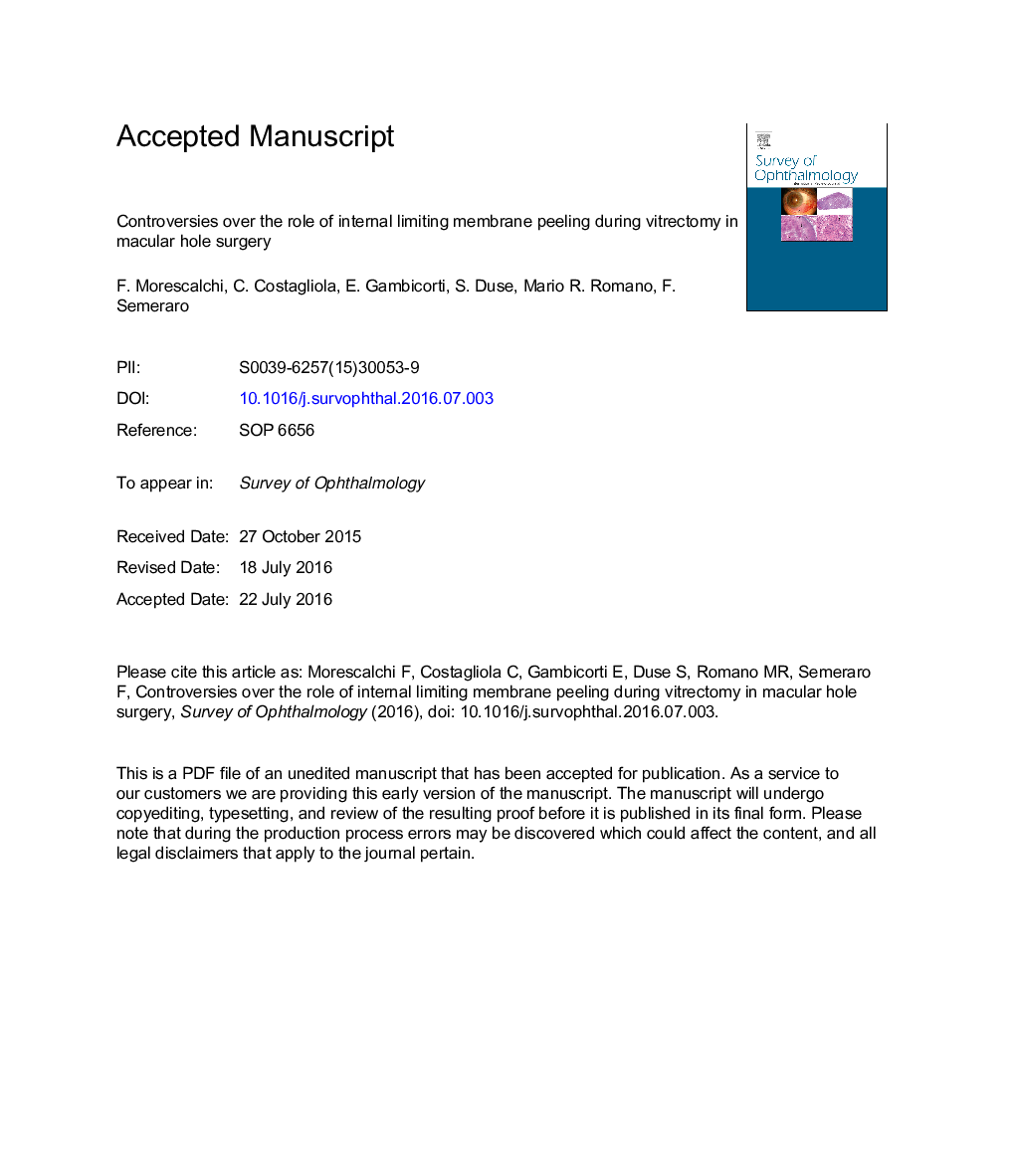| Article ID | Journal | Published Year | Pages | File Type |
|---|---|---|---|---|
| 5705735 | Survey of Ophthalmology | 2017 | 41 Pages |
Abstract
Surgical management of an idiopathic macular hole consists of vitrectomy to release vitreofoveal traction and intraocular tamponade to flatten and reappose the hole's edges. The intentional atraumatic removal of the internal limiting membrane has been proposed as cost-effective option in macular hole surgery. The internal limiting membrane contributes to tangential traction at the edges of the hole and acts as a platform on which glial cells proliferate. Removal of the internal limiting membrane increases the elasticity of the denuded macula and improves the anatomical success rate; however, the visual consequences of this surgical maneuver are still not fully known. We discuss the beneficial and adverse effects associated with internal limiting membrane peeling in macular hole surgery, highlighting the internal limiting membrane's role in macular hole etiology and pathogenesis and the anatomical and functional findings after its removal.
Keywords
Related Topics
Health Sciences
Medicine and Dentistry
Ophthalmology
Authors
Francesco MD, Ciro MD, Elena MD, Sarah MD, Mario Rosario MD, Francesco MD,
